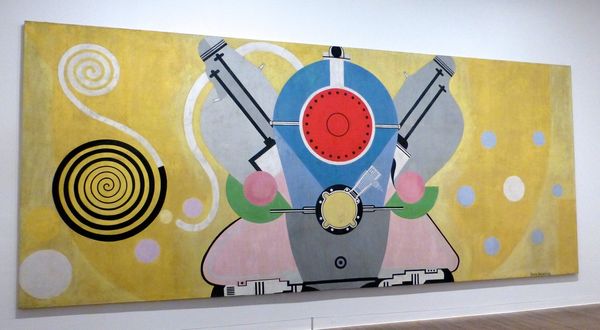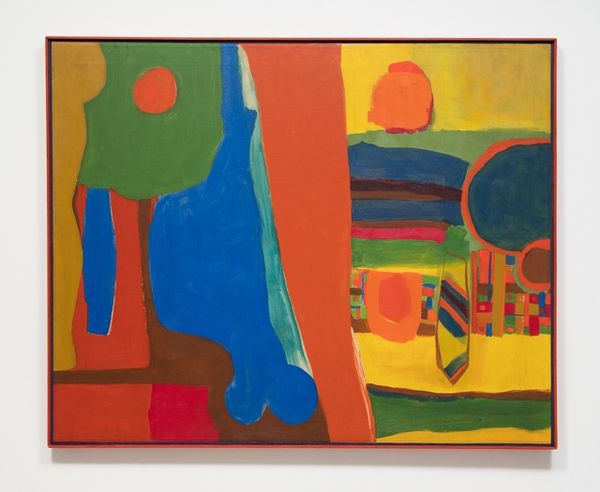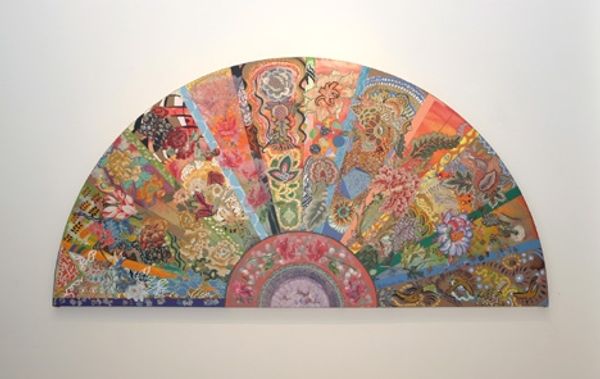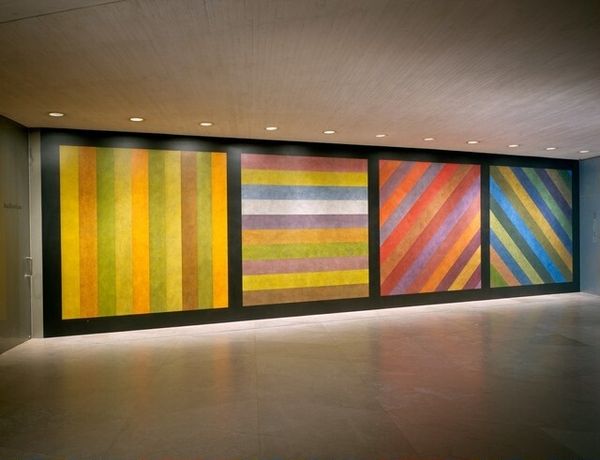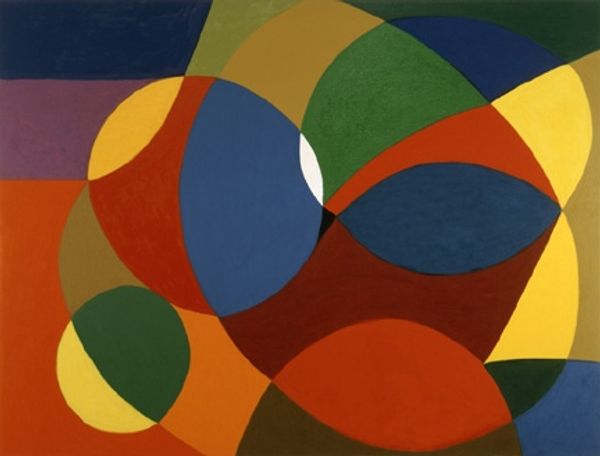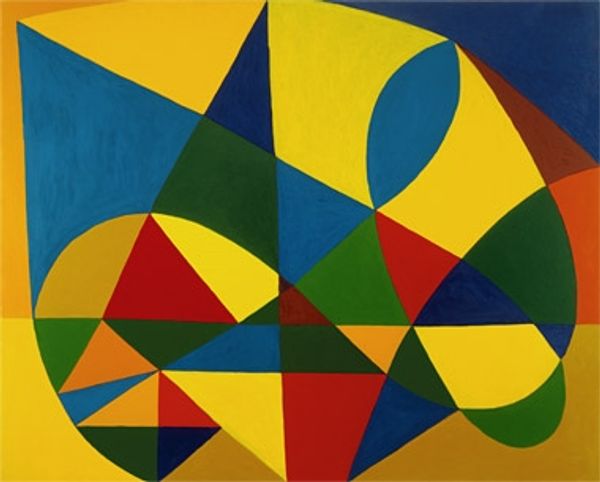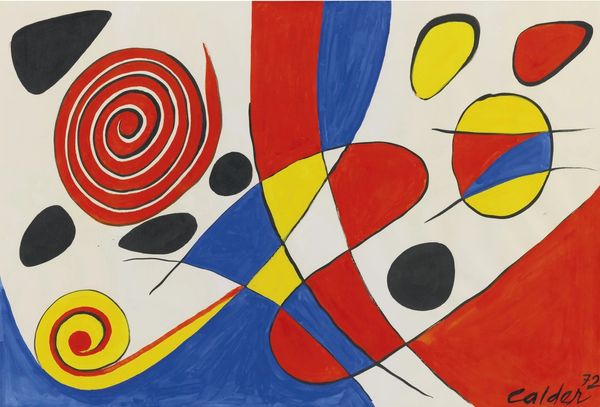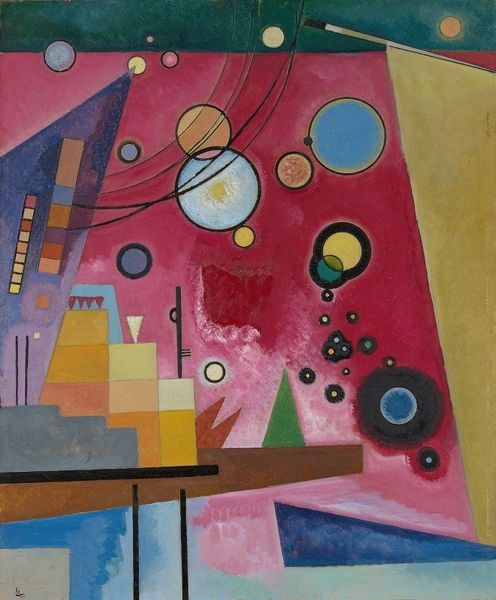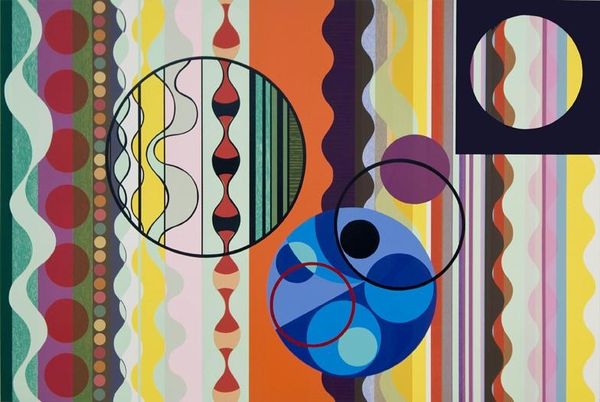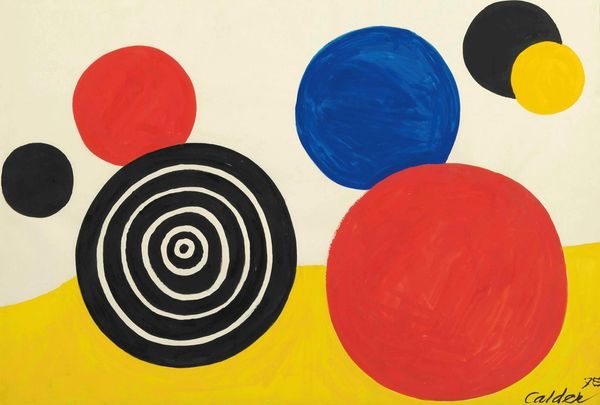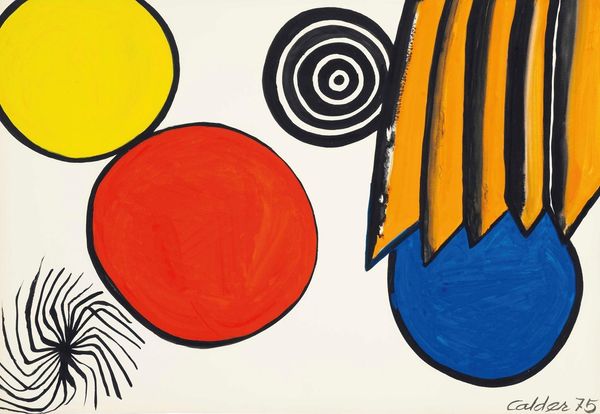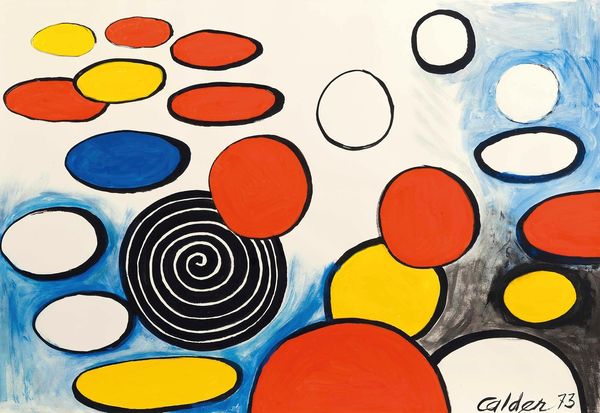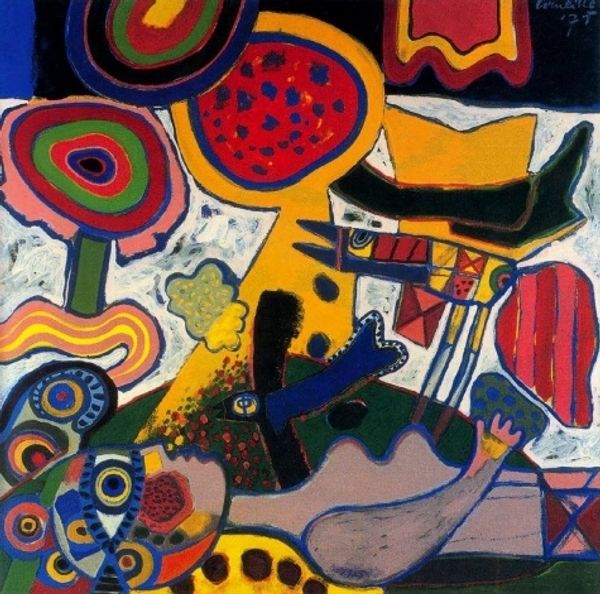
Tableau De Bord, Décoration Pour Le Palais De L’Air, Exposition Internationale Des Arts Et Des Techniques Dans La Vie Moderne 1937
0:00
0:00
painting, mural
#
small interior
#
interior architecture
#
art-deco
#
cubism
#
modern interior design
#
interior design shot
#
painting
#
interior photography design
#
professional interior photography
#
wooden interior design
#
geometric
#
interior architecture photography
#
abstraction
#
modern period home
#
interior photography
#
mural
Copyright: Sonia Delaunay,Fair Use
Editor: Here we have Sonia Delaunay’s "Tableau De Bord, Décoration Pour Le Palais De L’Air, Exposition Internationale Des Arts Et Des Techniques Dans La Vie Moderne," created in 1937. It looks like a large mural comprised of colorful concentric circles. I am intrigued by the implied functionality—it feels both decorative and like it should have some purpose related to aviation! What do you make of this work? Curator: The immediate connection I make is with materials, labor, and the context of production. This wasn’t just created, but rather manufactured. Given that this mural was conceived for the Palais de l'Air, part of a larger exhibition, we have to consider the materials chosen. Delaunay's embrace of industrial paints and techniques signaled a deliberate blurring between "high" art and commercial design. How do these materials change the context and perceived purpose of the artwork? Editor: So, the medium is as significant as the imagery itself? Were these industrial paints intended for purely aesthetic appreciation? Curator: Precisely. Consider how Delaunay is not simply representing modernity, but engaging with it through its very building blocks. These aren’t handcrafted pigments painstakingly mixed, but products of mass manufacturing. The social context also adds to this dialogue. Created during the buildup to World War II, the 'Palais de l'Air' was meant to showcase the progress of aviation technology. Editor: Interesting. By utilizing those materials she not only comments on modernity, but becomes part of that machine-driven era. It is less about timeless beauty and more about engaging with contemporary society and its technologies. Curator: Exactly. The piece makes us think about the purpose and value of art in a world increasingly shaped by industry and technology. Looking at it now I see an integration of function, aesthetics and the political context in 1930’s France. What did you learn in our exchange? Editor: How important it is to look beyond the art, to look at what went into creating it.
Comments
No comments
Be the first to comment and join the conversation on the ultimate creative platform.
